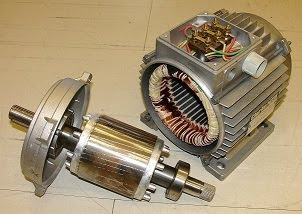It seals RM43mil operation and maintenance agreement with Laraib Energy
KUALA LUMPUR: Tenaga Nasional Bhd's (TNB) unit TNB Repair and Maintenance Sdn Bhd (TNB Remaco) has secured an operation and maintenance agreement worth US$14.1mil (RM43mil) from Pakistan's Laraib Energy Ltd.
TNB Remaco will be the operator of the 84MW New Bong Escape Hydroelectric Power Complex on the Jhelum River in Azad Jammu and Kashmir.
“Under the contract, TNB Remaco will provide services for an initial period of five years with an option of extending for another seven years,” president/chief executive officer Datuk Seri Che Khalib Mohamad Noh said at the signing ceremony between TNB Remaco and Laraib Energy yesterday.
Khalib who is also the chairman of TNB Remaco said the 15-month mobilisation period was expected to commence in August.
Technical tie-up: Khalib (left) exchanging documents with Harris. With them are (from left) Energy, Water and Communications MInistry deputy secretary-general Badaruddin Mahyuddin and Pakistani Deputy High Commissioner Imtiaz A. Kazi. - Starpic by Rohaizat bin Md Darus
TNB Remaco will provide technical personnel and skilled expertise to perform daily operations as well as routine maintenance of the complex.
“This new agreement marks TNB Remaco's second collaboration with HUB Power Co (a major shareholder of Laraib Energy). The first being the operation and maintenance agreement for the 213.6MW diesel and co-generation power plant in Punjab, Pakistan,” said Khalib.
He said the agreement would further augment TNB Remaco's reputation as a one-stop service provider for power-related works and also identified TNB Remaco's repair centre as a regional repair hub, in line with TNB's aim to be a global brand.
Laraib Energy's chairman and Hub Power Co's chief executive officer Vince Harris said the company had invested some US$235mil on the hydroelectric power plant and it was well advanced in commercialisation.
He described the 84MW hydroelectric plant as a “major infrastructure project.”
Harris said TNB Remaco won the job as the group was confident with its capability and expertise.
Khalib said the company was “looking” at various opportunities for maintenance job including in Indonesia and Brunei.
He said TNB Remaco's strategy was to provide services and not buying assets.
TNB Remaco managing director Nor Azman Mufti said the group aimed to increase its overseas' revenue contribution to 40% from 10% currently.
Khalib said TNB had been working closely with the Government on the negotiation with independent power purchasers (IPP). “We look forward for the positive outcome of the negotiation with IPPs.”
He, however, declined to reveal details of the negotiations. “The details are best answered by the Government.”
Meanwhile, Khalib said TNB would not be extending its power purchase with PowerSeraya Ltd, a unit of YTL Power International Bhd when it expired on June 15.
“At the moment there's no need to extend it. We will only know if we need to purchase from Singapore at the next curtailment at the end of the month whereby Petroliam Nasional Bhd-owned gas production platform will undergo maintenance work,” he said.
Khalib said the purchase represented only 1% of total demand. He explained that TNB was buying power across the border for security reason and it was normal for any utility company to make such purchases.
“We have managed to pull through in the past two major curtailment. We're confident to pull it through this time as well,” he said, adding that there was no shortage of power supply and it had an excess capacity of 40% currently.







































